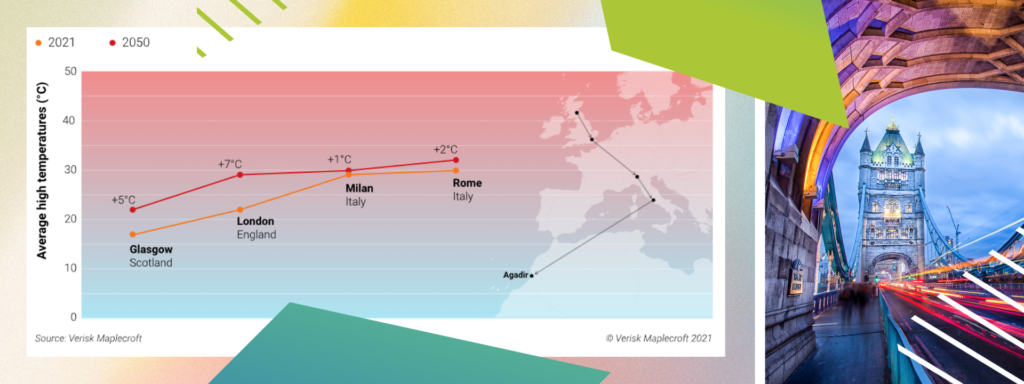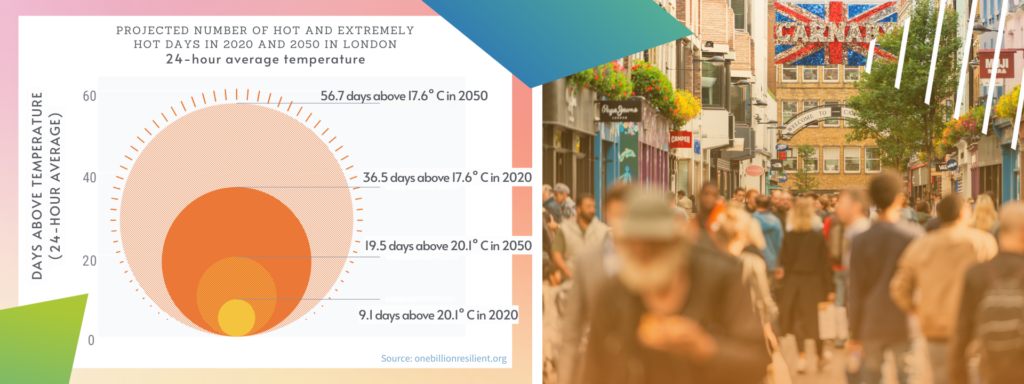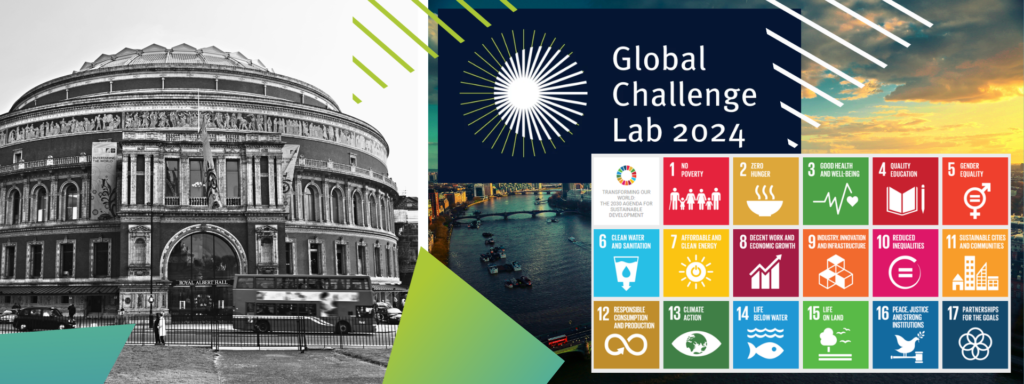London: Building a Climate Resilient City
This summer, Student Energy’s Senior Information Designer Ailette Cordova was invited to attend “Building a Climate Resilient City,” an event hosted by Arup that featured commentary from Jo da Silva DBE and Emma Howard Boyd CBE surrounding the “London Climate Resilience Review” and the “City Resilience Framework.”
Being invited to witness London’s Climate Resilience program has given us the incredible opportunity to engage in valuable discussions with leaders from various sectors and hear from two prominent figures in the climate action movement: Jo da Silva DBE and Emma Howard Boyd CBE. The “Building a Climate Resilient City” event, hosted by Arup, brought together a diverse group of stakeholders to discuss strategies that can enhance a city’s resilience in the face of increasing climate change impacts and to delve into the key findings of the London Climate Resilience Review Interim Report. It was truly inspiring to witness the collaborative efforts that attendees displayed to address the challenges posed by climate change and strengthen city resilience.
The interim report of the London Climate Resilience Review defines “resilience” in accordance with the London Environment Strategy, outlining it as “the capacity of a system to bounce back from the impacts of severe pressures that may have resulted in damage.” The London Environment Strategy, created by the Office of the Mayor of London, presents a bold vision for enhancing London’s environment for the well-being of all residents through its website and an easy-to-read PDF document.
The City Resilience Framework
The event’s inciting discussion between Jo da Silva and Emma Howard Boyd focused on naming and outlining the risks posed by climate change across the UK. Each participant underscored the significant role that government and financial leaders must play in building climate resilience; The pairs emphasized that there is an increasing regional awareness about the repercussions of climate change, particularly in London.
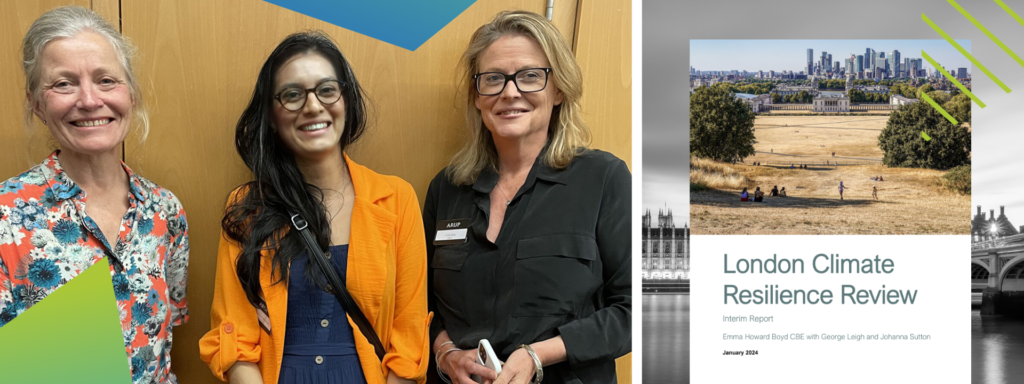
Jo da Silva described the direct impacts of climate change as risks to our entire global society, including the loss of life and a decrease in average quality of life, damage to essential infrastructure networks, and increasingly frequent interruptions to global trade. Da Silva has been involved in city resilience work since 2007 and has been a part of the Asian Cities Climate Change Resilience Network, contributing to projects in 10 cities across Asia. Her experience has led her to recognize the urgent need to address the impacts of climate change, which led to the City Resilience Framework set to be implemented across 200 cities worldwide. The growing impetus for major urban centers like London to take dire action is evident, given that cities are responsible for the majority of carbon dioxide emissions while accommodating 60% of the global population, serving as major hubs in the global economy.
Therefore, the “London Climate Resilience Review” is an important document that Emma Howard Boyd has facilitated as her career in green finance has evolved over time. She worked at the fore of London Climate Resilience projects from 2016 to 2022, understanding how the government works, commissioning global adaptation, working across many boards through climate foundations, Green Finance, joint environment, and tenacious networking. If we compare Emma’s approach to what we see (or more actually do not see) in other sectors like banking, the versatility and utility of Howard Boyd’s approach is clear.
The release of 3-minute videos by the BBC, offering recommendations and highlighting the risks of climate shocks in London, inspired Emma to launch the Climate Resilience Review, focusing on local-level actions for adaptation to achieve net zero and reduce the loss of lives by building resilience.
The final version of the review was published after the general elections, and it is available at here.
London is reaching 40 degrees
Seemingly all at once, water consumption increased, and many parts of London nearly ran out of potable water. In an act of shared community sacrifice, the city massively reduced water consumption; this is the power of collective participation, a delightful surprise to behold in action.
This type of communal living and effort is also not negotiable for a resilient city. Cities need to build networks of inter-industry, inter-community solidarity to properly defend themselves against the increasingly violent challenges posed by climate change. Through reading the “London Climate Resilience Review”, we are tasked to think about cross-industry investment and the value of educating stakeholders and community members on what they can do when the next heatwave hits. Only through building robust systems of education and preparedness can cities hope to avoid major hazards from climate change.
The impact on global youth
Even though the conversation did not directly address the involvement of the youth, through networking, we were able to discuss this key demographic’s potential and the role of the next generation of leaders in the energy and climate spaces. Globally, youth are one of the most vulnerable populations to the effects of climate change. High temperatures can impact air quality, affect student learning and productivity, and even influence behavior. Youth also possess limited capital and economic agency when compared to previous generations, limiting their ability to achieve self-sufficiency in the face of a changing climate.
By collaborating globally and intentionally fostering the involvement of young actors and leaders, we can empower the new generation to drive creative climate solutions that will bring a cleaner future for all. This point is also highlighted in the preliminary report as a recommendation to the Mayor of London, which urges London’s participation in initiatives such as the Global Challenge Lab, which organizes a competition for students to generate innovation toward the UN Sustainable Development Goals. Throughout the report’s suggestions, it is made clear that the best way to build adaptable and resilient cities is for individuals, officials, and the city itself, to want to belong to something bigger: a global movement of climate resilience.
The London Climate Resilience Review
The review examines actions required at national, regional, and local levels to reduce climate change impacts in London. It emphasizes ensuring that vulnerable populations will benefit from adaptation efforts and helps all Londoners prepare for and recover from climate-related events. Vulnerability to the negative impacts of climate change is not felt evenly throughout London’s demographics; according to research by CDP (Carbon Disclosure Project), low-income households, elderly people, marginalized and minority communities, children and youth, as well as vulnerable health groups are consistently the most vulnerable to climate hazards across the UK’s local authorities.
Howard Boyd’s review recommends embracing an adaptive pathways approach to empowering decision-makers, where organizations, private companies, and governmental institutions proactively plan for future climate hazards by remaining agile to the latest climate science, growth projections, and changes in the local environment. At a roundtable hosted for the review, one participant emphasized the power of adaptation in imagining the desired future. The London Plan propels action through policies on crucial areas such as overheating and cooling, urban greening, and flood risk management. Here’s why:
London’s Climate Risks
-
- Heat.
In July 2022, London hit 40°C, resulting in significant impacts such as wildfires, strain on emergency services, and infrastructure breakdown. Heat exposure led to substantial labor hours lost and a rise in heat-related deaths. Additionally, rising temperatures have been linked to increased violent crimes and impacts on mental health.
-
- Drought
In England, the public water supply faces a potential shortfall of nearly 4 billion liters of water per day by 2050. London is already experiencing water stress, with high temperatures leading to increased water consumption and low reservoir levels. The economic costs of drought in 2012 were substantial, and a water shortage could cost London’s economy £500 million per day. Solutions include building a new reservoir, investing in leak reduction, implementing smart metering, and educating the public about water efficiency.
-
- Rising Sea Levels
London’s current river defenses protect homes, infrastructure, and businesses. With sea levels expected to rise, proactive action is needed to strengthen the Thames’ defenses and invest in London’s riverside.
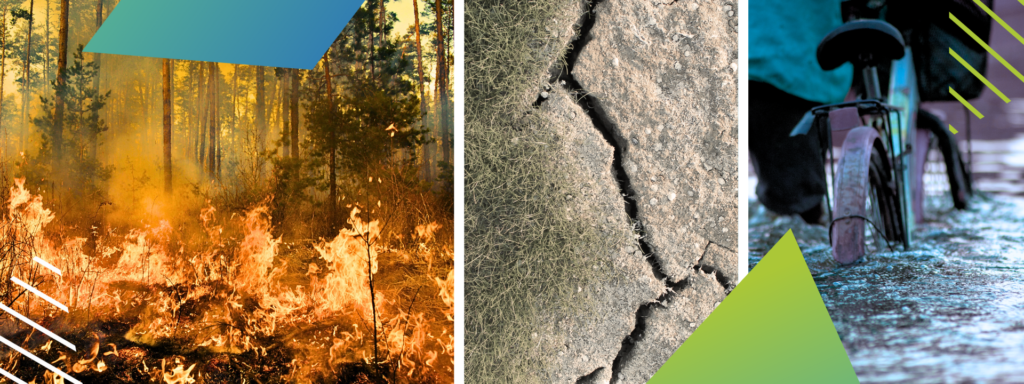
-
- Surface Water Flooding
The flooding in London in July 2021 caused major disruption and flooded over 2,000 properties with stormwater and sewage. More than 30 tube stations were affected, and hospital wards were evacuated. According to Zurich UK, flooding from torrential rain threatens 42% of the capital’s 301,000 commercial buildings. The average cost of flooding to a home is £30,000 and £82,000 to a business. Additionally, the increase in winter rainfall has led to wetter conditions for football and rugby union, resulting in the cancellation of around 120,000 games per season.
-
- Wildfires
Wildfires are increasing in frequency and intensity around the world and London is no exception. These fires are a growing threat to London’s rural/urban interface, as shown at Wanstead Flats in 2018 and Wennington in July 2022. More focus should be on prevention and the preservation of biodiversity must be considered in any wildfire strategy. However, London has not yet developed a formal strategy for managing wildfires.
-
- Wider Climate Risk
Even though the framework approaches cities at their individual levels, London is susceptible to climate-related disasters from other parts of the world as no city on Earth can consider itself truly insulated from the movements and currents of geopolitics. Severe storms, flooding, and droughts can disrupt energy and food supply, and lead to migration and conflicts; the potential emergence of tropical diseases is also a concern. As climate change and its effects continue to alter the way humans see each other and our “resources,” several experts predict an increase in global political instability. Being aware of this fact can help Londoners stay informed and aware of the changing world around them.
Building from London Climate Resilience
Throughout London Climate Resilience, the following principles have evolved to guide action on climate adaptation and the implementation of its recommendations:
- When adapting London to climate change, it’s important to prioritize the needs of the people, involve local leadership, reduce vulnerability, and address socio-economic and racial inequality.
- Climate change adaptation should be integrated into decision-making at all levels, and organizations should ensure that adaptation efforts are supported at a strategic level and clearly assigned responsibility.
- Climate change adaptation should be coordinated with efforts to achieve net zero emissions for a comprehensive approach.
- Adaptive pathways approaches are encouraged. Given climate change’s unpredictability, it’s crucial to remain flexible while addressing known risks and critical thresholds.
-
- Supporting decision-makers in identifying suitable actions for now and the future.
- Helping institutions, organizations, and private companies prepare for future climate risks by staying updated on the latest climate science, growth projections, investment opportunities, and other changes in the local environment to enable better planning.
- Prioritizing nature-based solutions is crucial at all times. These solutions involve safeguarding, overseeing, and rejuvenating both natural and human-altered ecosystems to tackle societal problems. By addressing issues like climate change, human health, food and water security, and disaster risk reduction, these solutions can benefit both people and nature.
The experience of attending a climate resilience review event of this type made it clear how many hardworking-devoted people are invested in completing this type of essential work and organization, but also that there is much more to be done. London is also only a single city, situated in a part of the world with a historically greater access to wealth and resources. How might the problems Londoners are facing be impacting others in parts of the world with less overall development? We hope to see Climate Resilience Plans begin to populate the world, while we continue to advocate for a greener, cleaner, future.
The London Climate Resilience Review document can be reviewed here.
